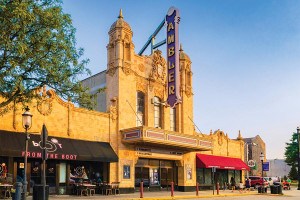From Perth to Penn’s Landing?

What’s been proposed for Penn’s Landing isn’t quite as dramatic as what Elizabeth Quay should look like once the development around it is complete, as in this rendering from Ashton Raggatt McDougall and the Metropolitan Redevelopment Authority of Perth. But the city and the Delaware River Waterfront Corporation pin similar hopes for spinoff development on the proposed enlarged park.
While the planned Penn’s Landing makeover currently lives in suspended animation, perhaps we should not fret too much over the lack of visible progress. Sometimes it takes a while to get things right.
Consider the recent reclamation of a desolate plot of land next to the Swan River in central Perth, the capital of Western Australia. On Jan. 29, after seven years and at least one false start, Perth’s Metropolitan Redevelopment Authority cut the ribbon on a new riverside park that has drawn huge crowds and reconnected the city to its river since its opening. Called Elizabeth Quay, the park is the brainchild of Professor of Landscape Architecture Richard Weller of the University of Pennsylvania School of Design.
Weller, a native Australian, got the commission for the project while still on the faculty of the University of Western Australia in Perth. This wasn’t the first attempt to redevelop the land that became Elizabeth Quay, either: proposals for remaking Perth’s central riverfront stretch back more than a century, and perhaps ironically, former Penn Design Dean Gary Hack and his firm, Carr, Lynch, Hack and Sandell, won a previous design competition in 1991, but their design never made it off the drawing board. Weller, in association with Ashton Raggatt McDougall Architects, won a subsequent design competition in 2008.
That design got bogged down in controversy, thanks in part to the nature of the site. “It was a large, flat surface of grass as landfill had been used to ‘clean up’ the river edge,” Weller said. “Usually, waterfronts are done on post-industrial sites and are perceived by their communities as an improvement. In this case, the project was very controversial because we were removing ‘nature,’ albeit just grass on landfill.”
The site sits at the in-town end of a larger expanse of filled-in land along the Swan. While its eastern end has some landscaping and appears to have some park use, the land next to downtown Perth sat unused, cut off from the city by a riverside highway.
“Like many cities around the world, Perth was divorced from its waterfront. The city had been trying to reconnect back to its river for over 100 years, and for a long time it looked like our design would go the way of all the others. But the government had some money from the recent mineral boom in that part of the world, so they decided to finally go for it,” Weller said in a post on the Penn Design blog about the project.
Weller’s initial design, which carved a circular inlet out of the fill and ringed it with high-rise towers, drew criticism in the local press, which dubbed it “Dubai on the Swan.” But the MRA intended for this site to serve as a catalyst for downtown development and expansion—”the government spent A$400 million [US$289.6 million] on the landscape as a catalyst and attractor,” Weller said—so the criticism didn’t kill the project as much as it altered it a bit.
Since opening, Elizabeth Quay has performed its “attractor” role quite well. A recent MRA blog post noted that the park attracted 800,000 visitors in its first three weeks. The authority expects Elizabeth Quay to spark A$2.2 billion (US$1.6 billion) in private development over the next 10 years. The Delaware River Waterfront Corporation’s 2014 study of the proposed Penn’s Landing park has similar projections riding on it: it projects that a $250 million public investment would ultimately return $1.6 billion in cumulative revenue for the city, state and school district and spark some $700 million in private investment around it.
Penn’s Landing’s Great Plaza plays a similar role to Elizabeth Quay at present, but is hampered in its ability to stimulate development by the freeway that separates it from the rest of the city. Weller noted that in order to make Elizabeth Quay work, the highway, Riverside Drive, had to be rerouted away from the site. Doing the same with I-95 here would be difficult at best, so current plans call for a cap over the highway that would also serve to transition from Front Street’s higher elevation down to the water’s edge.
Since the city’s master plan for the Central Delaware riverfront doesn’t envision truly tall buildings along the river, worries about a “Dubai on the Delaware” are nonexistent. And since the Delaware riverbank’s reclaimed land has already been built upon, there’s not much that needs wholesale rescuplting. Given the process by which public works come to fruition around here these days, expecting a ribbon-cutting in seven years may even be a bit optimistic. But if the result is as attractive and successful at attracting visitors as Elizabeth Quay is, it will have been worth the wait.
[Updated Feb. 24, 10:39 a.m., to properly credit source of the rendering.]


